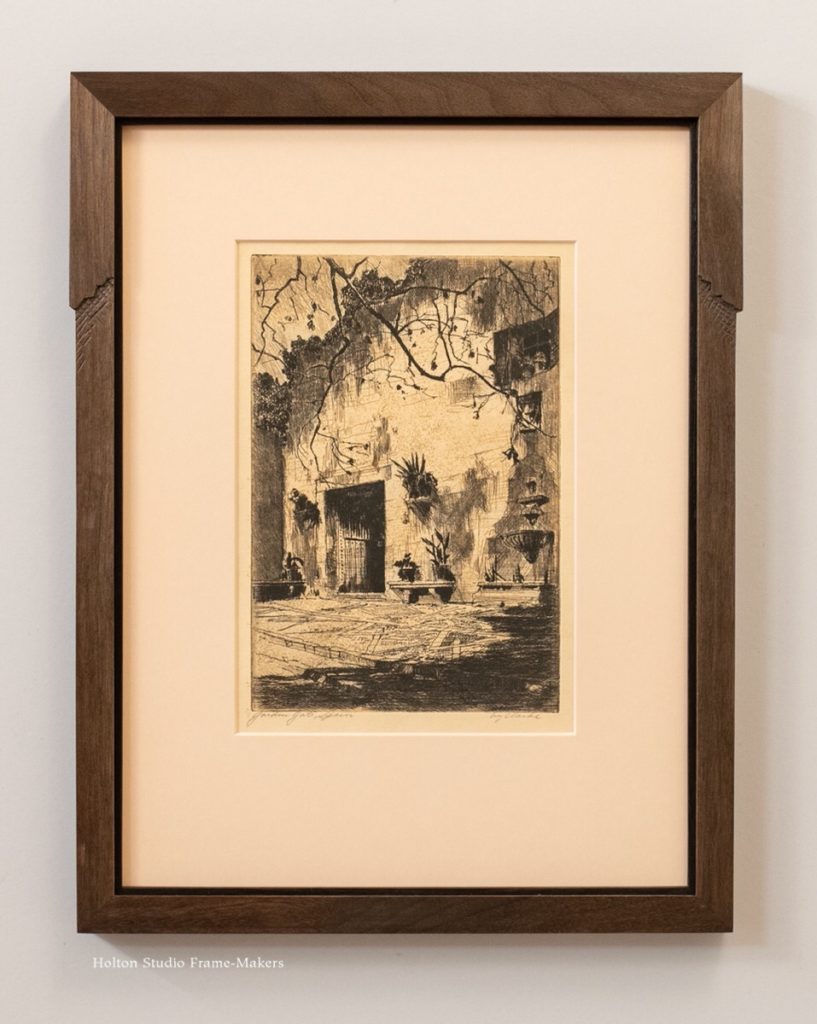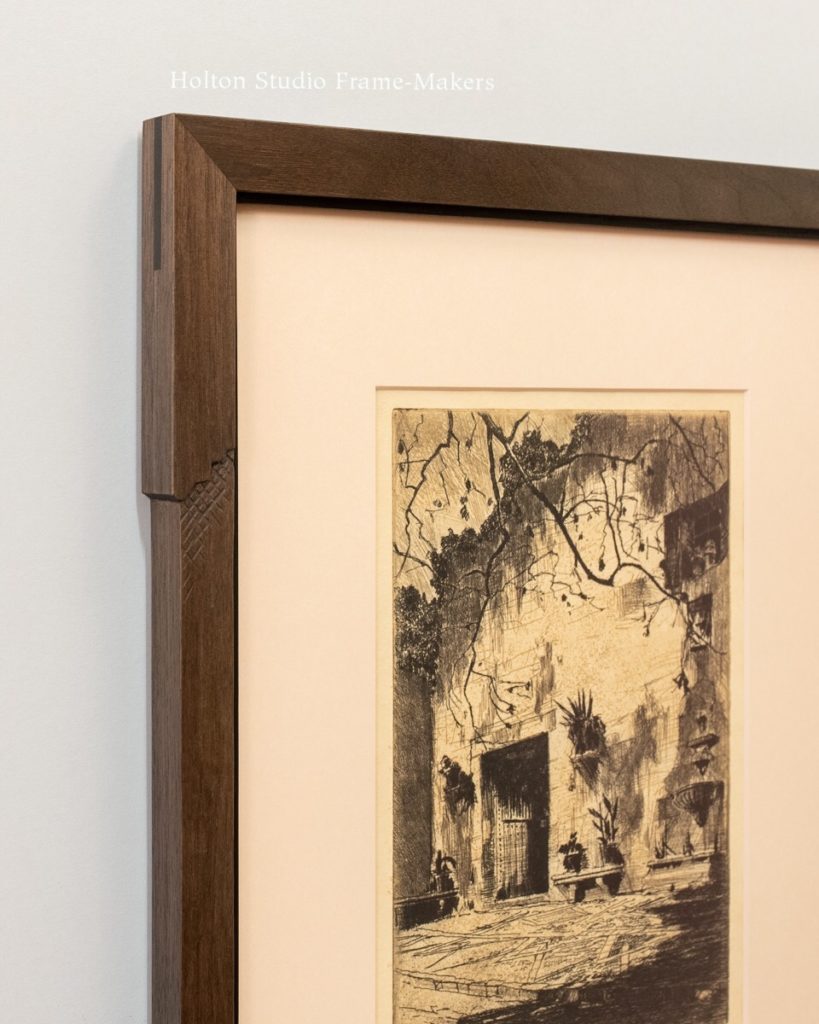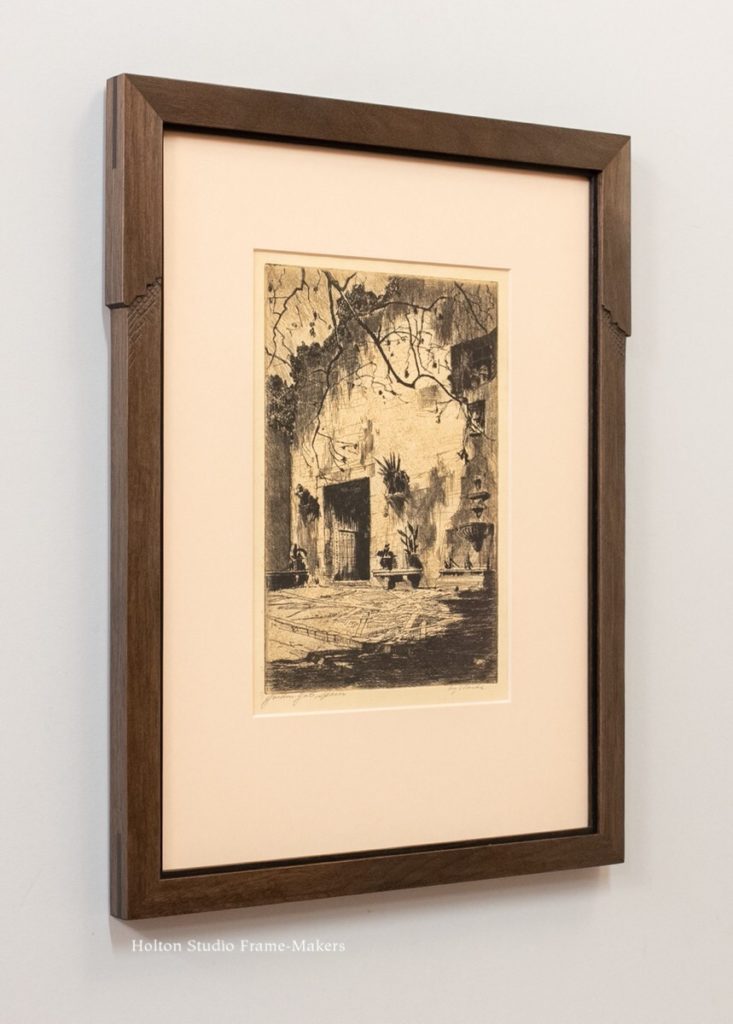This is a 9″ x 6″ etching by Harrison Clarke titled “Garden Gate, Spain,” n.d. (1930’s). Most of the frame is 3/4″ wide, but it bumps out 1/8″ at the top portion, and that wider portion is also 1/16″ thicker than the lower part of the frame. The wood is walnut with a black wash. A 1/8″ wide walnut slip, stained black, adds definition and emphasis.
 Clarke worked for Willis Polk and other architects, and made architecture his main subject matter. (See his biographical information below.) The architectural subject of this print suggested the architecture of the frame. This is another example of the framing design approach I’m calling sheltering, in which the top portion of the frame is heavier, often emphasizing its architectural role as something like a roof, awning or lintel. (My last two posts, here and here, show other examples.) In addition to joining in Clarke’s tribute to the art of architecture, the frame pays tribute to Clarke’s art of etching with a bit of cross-hatched shading similar to that in the print, and giving subtle emphasis to the distinctive form of the frame.
Clarke worked for Willis Polk and other architects, and made architecture his main subject matter. (See his biographical information below.) The architectural subject of this print suggested the architecture of the frame. This is another example of the framing design approach I’m calling sheltering, in which the top portion of the frame is heavier, often emphasizing its architectural role as something like a roof, awning or lintel. (My last two posts, here and here, show other examples.) In addition to joining in Clarke’s tribute to the art of architecture, the frame pays tribute to Clarke’s art of etching with a bit of cross-hatched shading similar to that in the print, and giving subtle emphasis to the distinctive form of the frame.
 According to the authoritative Edan Hughes‘s “Artists in California, 1786-1940”,
According to the authoritative Edan Hughes‘s “Artists in California, 1786-1940”,
Harrison Clarke was born in Spokane, WA in 1890. Clarke studied architecture in the office of Willis Polk in San Francisco before serving in the Army during WWI. After his discharge in France, he studied at Ecole des Beaux Arts in Toulouse and made a sketching tour across Europe. Returning to the U.S., he devoted his attention to architectural renderings for Myron Hunt and other well-known architects. By the late 1920s he had settled in Los Angeles and was active there into the 1930s. His etchings are mostly architectural subjects.
« Back to Blog
